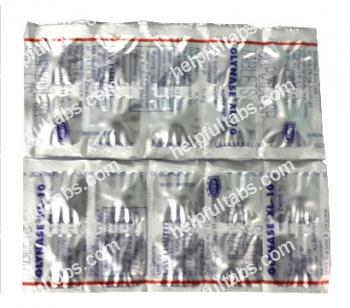

















| Country | Shipping method | Delivery time | Price | |
|
|
 Delivery Delivery |
14-21 days | 10$ | Tracking# available in 4 days |
 Delivery Delivery |
9-14 days | 30$ | Tracking# available in 2 days |
Glipizide is a medication from the sulfonylurea class used to treat type 2 diabetes. It works by stimulating insulin secretion from the beta cells of the pancreas. Other drugs in the same class include glimepiride (Amaryl), glyburide (Micronase, Diabeta), tolbutamide (Orinase), and tolazamide (Tolinase).
Do not adjust your Glipizide dose without consulting your doctor. The typical starting dose for immediate-release tablets is 5 mg, taken 30 minutes before a meal. The maximum daily dose for immediate-release tablets is 40 mg, while for extended-release tablets, it should not exceed 20 mg daily. Take the medication with a full glass of water before a meal. Consistent use is essential for optimal results.
Glipizide treatment may increase the risk of cardiovascular-related death. Avoid alcohol as it can lower blood sugar. Do not chew, split, or crush extended-release tablets; swallow them whole.
Glipizide is contraindicated in cases of hypersensitivity, insulin-dependent diabetes mellitus (juvenile diabetes or diabetes with ketoacidosis or precoma), severe kidney or liver failure, gastrointestinal tract stenosis, or use in infants.
Possible side effects include allergic reactions (hives, rash, facial or tongue swelling), headache, dizziness, diarrhea, gas, hepatitis, jaundice, and low sodium levels.
Alcohol can delay Glipizide absorption. Administer Glipizide 1-2 hours before cholestyramine, as cholestyramine affects its absorption. Fluconazole (Diflucan) increases Glipizide absorption and effectiveness. Medications that alter blood sugar levels, such as aspirin, NSAIDs, sulfa drugs, MAO inhibitors, beta-blockers, thiazide diuretics, steroids, estrogens, thyroid medications, phenothiazines, niacin, phenytoin, and calcium channel blockers, may impact Glipizide's effectiveness.
If you miss a dose, take it as soon as you remember. However, if it is almost time for your next dose, skip the missed dose. Do not take extra or double doses. Resume your regular dosing schedule the next day.
Overdosing on Glipizide can cause symptoms of low blood sugar, such as hunger, nausea, anxiety, cold sweats, weakness, drowsiness, unconsciousness, or coma. Seek immediate medical attention if you experience these symptoms.
Store Glipizide at room temperature, between 20-25°C (68-77°F). Keep it away from moisture, heat, and sunlight. Avoid storing in bathrooms or areas accessible to children.
This information is for general purposes only and does not cover all possible directions, drug interactions, or precautions. It should not be used for self-diagnosis or self-treatment. Always consult your healthcare provider for specific instructions. We are not responsible for any direct, indirect, or other damages resulting from the use of this information or self-treatment.